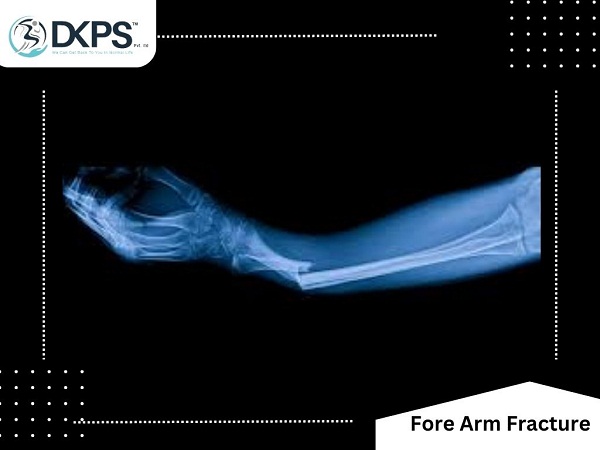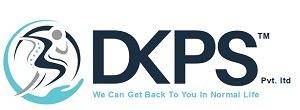- Home
- About Us
- DKPS Dealing
- BLOG
- Delhi NCR
- Delhi
- Physiotherapy at Home Near Me | Physiotherapist in South Delhi
- Best Chiropractor in Delhi
- Physiotherapist in Delhi
- Cupping Therapy in Delhi
- Home Nursing Services in Delhi
- Needle Therapy for Back Pain
- Sports Injury Physiotherapy
- Best Physiotherapist Visit at Home in Rohini Sector 24
- Physiotherapy at Home In Rohini Sector 9 |
- Physiotherapist in Pitampura | Physiotherapy at Home in Pitampura
- Physiotherapy at home in Rohini sector 29
- Physiotherapist in Paschim Vihar
- Physio home visit | Home Visit Physiotherapy |
- Physiotherapist in Saket | Best Physiotherapist in Saket |
- Physiotherapist In Janakpuri | Best Physiotherapist in Janakpuri |
- Best Physiotherapist in Punjabi Bagh | Punjabi Bagh Physiotherapist |
- Best Physiotherapist Service at Home in Dwarka, Delhi
- Best Physiotherapist in Chandigarh at Home Visit
- Faridabad
- Gurugram
- Noida
- Best Physiotherapy Gorakhpur
- Best Physiotherapist in Lucknow | Physiotherapist in Lucknow near me |
- Delhi
- Mumbai
- Delhi NCR
- Department
- Doctors
- Gallery
- Packages
- Contact Us
- Home
- About Us
- DKPS Dealing
- BLOG
- Delhi NCR
- Delhi
- Physiotherapy at Home Near Me | Physiotherapist in South Delhi
- Best Chiropractor in Delhi
- Physiotherapist in Delhi
- Cupping Therapy in Delhi
- Home Nursing Services in Delhi
- Needle Therapy for Back Pain
- Sports Injury Physiotherapy
- Best Physiotherapist Visit at Home in Rohini Sector 24
- Physiotherapy at Home In Rohini Sector 9 |
- Physiotherapist in Pitampura | Physiotherapy at Home in Pitampura
- Physiotherapy at home in Rohini sector 29
- Physiotherapist in Paschim Vihar
- Physio home visit | Home Visit Physiotherapy |
- Physiotherapist in Saket | Best Physiotherapist in Saket |
- Physiotherapist In Janakpuri | Best Physiotherapist in Janakpuri |
- Best Physiotherapist in Punjabi Bagh | Punjabi Bagh Physiotherapist |
- Best Physiotherapist Service at Home in Dwarka, Delhi
- Best Physiotherapist in Chandigarh at Home Visit
- Faridabad
- Gurugram
- Noida
- Best Physiotherapy Gorakhpur
- Best Physiotherapist in Lucknow | Physiotherapist in Lucknow near me |
- Delhi
- Mumbai
- Delhi NCR
- Department
- Doctors
- Gallery
- Packages
- Contact Us
Fore Arm Fracture
- Home
- Fore Arm Fracture

Fore Arm Fractures
How Physiotherapy Can Help:-
Fractures in the forearm are common injuries that can occur due to trauma, falls, sports, or accidents. The forearm consists of two bones, the radius, and ulna, which extend from the wrist to the elbow. Fractures in the forearm can involve one or both of these bones and can range from a minor crack to a severe break. These fractures can cause pain, swelling, stiffness, and restricted range of motion. Fortunately, with proper treatment and rehabilitation, most forearm fractures can heal without complications.
In this article, we will discuss the different types of forearm fractures, their causes, symptoms, and treatments, as well as the role of physiotherapy in the recovery process. We will also provide some exercises that can help with the rehabilitation of forearm fractures.
Types of Forearm Fractures-
Forearm fractures can occur in different locations and patterns. The most common types of forearm fractures include:
Distal Radius Fracture:
This is the most common type of forearm fracture and occurs near the wrist joint. This fracture can be caused by a fall on an outstretched hand or a direct blow to the wrist.
Ulnar Shaft Fracture:
This fracture occurs in the middle part of the ulna bone and is often caused by a direct blow to the forearm.
Radial Head Fracture:
This fracture occurs at the elbow joint and can be caused by a fall on an outstretched hand or a direct blow to the elbow.
Monteggia Fracture:
This fracture involves both the ulna and radius bones and is often caused by a fall on an outstretched hand.
Causes and Symptoms of Forearm Fractures-
Forearm fractures can occur due to various causes, including trauma, falls, sports injuries, and accidents. The symptoms of forearm fractures can vary depending on the severity and location of the fracture. However, some common symptoms of forearm fractures include:
Pain and swelling in the affected area
Deformity or misalignment of the forearm
Limited range of motion in the wrist or elbow
Bruising or discoloration around the fracture site
Numbness or tingling in the fingers or hand
Difficulty in gripping or holding objects
Treatment for Forearm Fractures
The treatment for forearm fractures depends on the severity and location of the fracture. In some cases, a simple fracture can be treated with immobilization and rest. However, severe fractures may require surgical intervention to realign the bones and stabilize the fracture site. Some common treatments for forearm fractures include:
Immobilization:
Immobilization is often the first step in treating forearm fractures. This involves the use of a cast, brace, or splint to stabilize the fracture site and allow the bones to heal.
Surgery:
In some cases, surgery may be required to realign the bones and stabilize the fracture site. This is often necessary for severe fractures or fractures that involve multiple bone fragments.
Rehabilitation:
Rehabilitation is an essential part of the recovery process for forearm fractures. This involves physical therapy, which can help to restore range of motion, strength, and flexibility in the affected area.
Physiotherapy for Forearm Fractures-
Physiotherapy can play a crucial role in the recovery process for forearm fractures. Physical therapy can help to improve the range of motion, reduce pain and swelling, and strengthen the muscles around the fracture site. Some common physiotherapy techniques for forearm fractures include:
Range of Motion Exercises:
Range of motion exercises can help to improve flexibility and restore movement in the affected area. Some common range of motion exercises for forearm fractures includes wrist rotations, finger stretches, and elbow bends.
Strengthening Exercises:
Strengthening exercises can help to improve muscle strength and prevent muscle atrophy in the affected area. Some common strengthening exercises for forearm fractures include wrist curls, forearm pronation, and supination, and grip strengthening exercises.
Manual Therapy:
Manual therapy techniques, such as massage and joint mobilization, can help to reduce pain and swelling, improve range of motion, and promote healing in the affected area.
Modalities
: Various modalities can be used to assist in the recovery process, such as heat and cold therapy, ultrasound, and electrical stimulation. These modalities can help to reduce pain and inflammation, improve blood circulation, and promote tissue healing.
Functional Training:
Functional training involves activities that mimic the patient’s daily tasks and movements. This can help to improve functional ability and promote a faster return to normal activities.
It is important to note that physiotherapy for forearm fractures should be customized to the individual patient’s needs and should be performed under the guidance of a licensed physiotherapist. The physiotherapist will evaluate the patient’s condition and develop a personalized treatment plan that includes exercises, manual therapy techniques, and modalities.
Conclusion-
Forearm fractures can be a painful and debilitating injury, but with proper treatment and rehabilitation, most patients can make a full recovery. Physiotherapy can play a critical role in the recovery process, helping to improve the range of motion, reduce pain and swelling, and strengthen the muscles around the fracture site. If you have sustained a forearm fracture, it is essential to seek medical attention and follow a rehabilitation program prescribed by a licensed physiotherapist. By doing so, you can ensure a faster and more complete recovery and return to your normal daily activities.
Additionally, patients with forearm fractures can benefit from following some general tips for a faster and more effective recovery. These include:
Rest and Immobilization:-
Resting the affected limb is crucial to allow the bones to heal properly. Patients should follow their physician’s advice regarding immobilization, such as wearing a cast or splint, and avoid activities that can stress the affected area.
Good Nutrition:
A healthy diet rich in vitamins and minerals can promote bone healing and tissue repair. Patients with forearm fractures should ensure they are consuming enough protein, calcium, and vitamin D to support their recovery.
Proper Hydration:
Adequate hydration can help to flush out toxins, reduce inflammation, and promote tissue healing. Patients should drink plenty of water and avoid sugary or caffeinated drinks.
Avoid Smoking and Alcohol:
Smoking and alcohol consumption can delay bone healing and impair tissue repair. Patients with forearm fractures should avoid smoking and limit their alcohol consumption during the recovery period.
Follow Rehabilitation Program:
Following a rehabilitation program prescribed by a licensed physiotherapist is essential to ensure a complete and effective recovery. Patients should attend all physiotherapy sessions and perform exercises and activities as prescribed.
In conclusion, forearm fractures can be a painful and disruptive injury, but with proper treatment and rehabilitation, most patients can make a full recovery. Physiotherapy is an essential component of the recovery process, helping to improve the range of motion, reduce pain and swelling, and strengthen the muscles around the fracture site. By following a comprehensive treatment plan that includes rest, good nutrition, hydration, and physiotherapy, patients can ensure a faster and more complete recovery and return to their normal daily activities.
How Drsinghphysiocare Can Help You:-
Drsinghphysiocare.com has very experienced physiotherapists well-versed in modern manual techniques and rehabilitation protocols. Moving patients from one place to another is complicated and can even increase the damage. Drsinghphysiocare.com offers physiotherapists home visits to rehabilitate patients in the comfort of their homes. Regular home physiotherapy by our physiotherapist helps patients actively and vigorously return to independence.
Senior physicians select our talented and experienced physiotherapists after they meet our strict recruitment standards. As a result of our higher standards and quality of service, many patients have recovered from the comfort of their homes and saved their valuable time and money
Additional Links
For More Articles
DKPS Physiotherapy services at Home
Contact Us
-
Rohini Sector 25 Pocket
1 Plot no 136
